Abstract
Isolated pure gonococcal pili were found capable of producing direct agglutination of human erythrocytes. Four different strains of gonococci were compared, and hemagglutination was produced by isolated pili or piliated gonococci but not by nonpiliated gonococci of each strain. Pili from each of the four strains were antigenically distinguishable using antisera specific for pili to agglutinate piliated gonococci, form precipitin lines in Ouchterlony immunodiffusion, or inhibit hemagglutination caused by purified pili or piliated gonococci. However, these tests also demonstrate some shared antigenicity among pili. Shared antigens among the four pili types were quantitated at less than or equal to 2.5% by radioimmunoassay. Inhibition of hemagglutination was most marked with antiserum to the homologous pili type. Inhibition of hemagglutination by antiserum to heterologous pili suggested that shared antigens on pili from B and 2686 strains of gonococci are located near the erythrocyte attachment moiety of B strain pili and removed from the attachment moiety of 2686 strain pili. These results suggest that antigenic heterogeneity of pili will prove an important factor in any efforts to use pili as a vaccine for gonorrhea.
Full text
PDF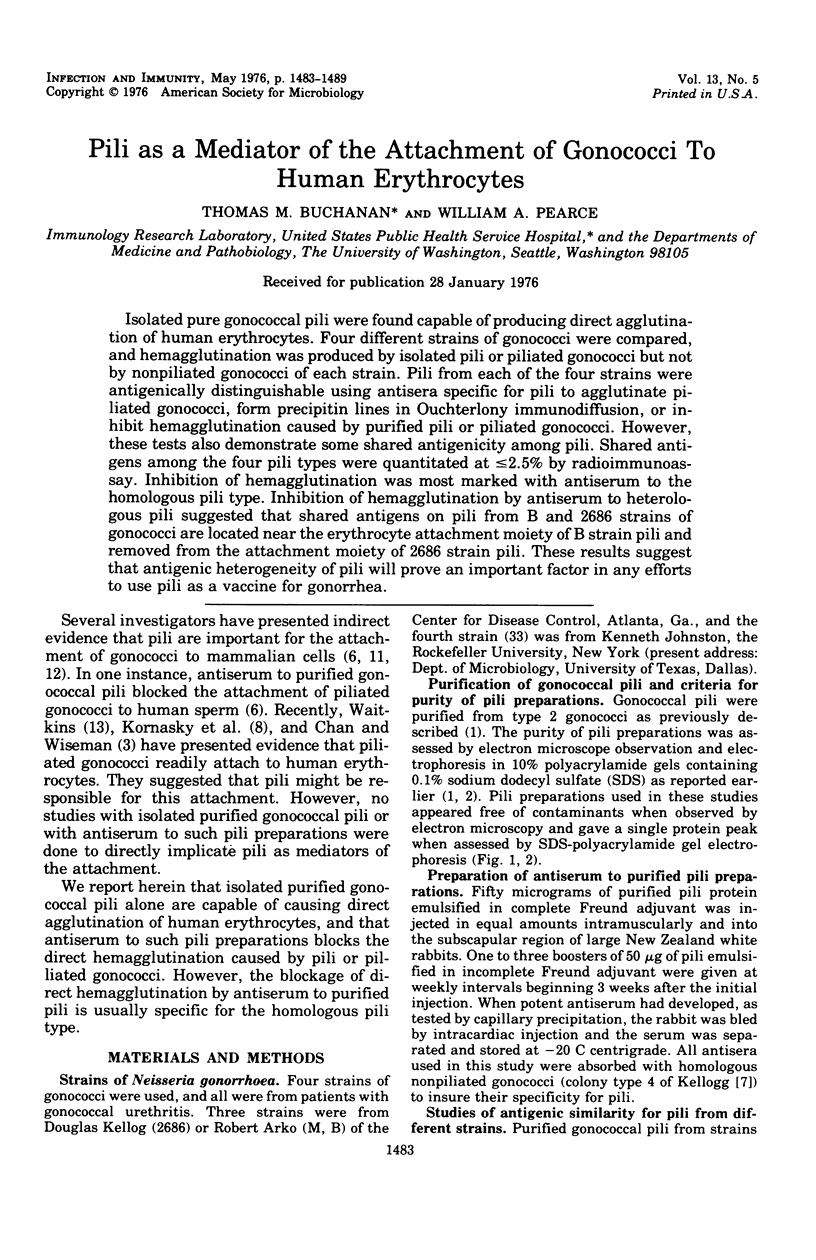
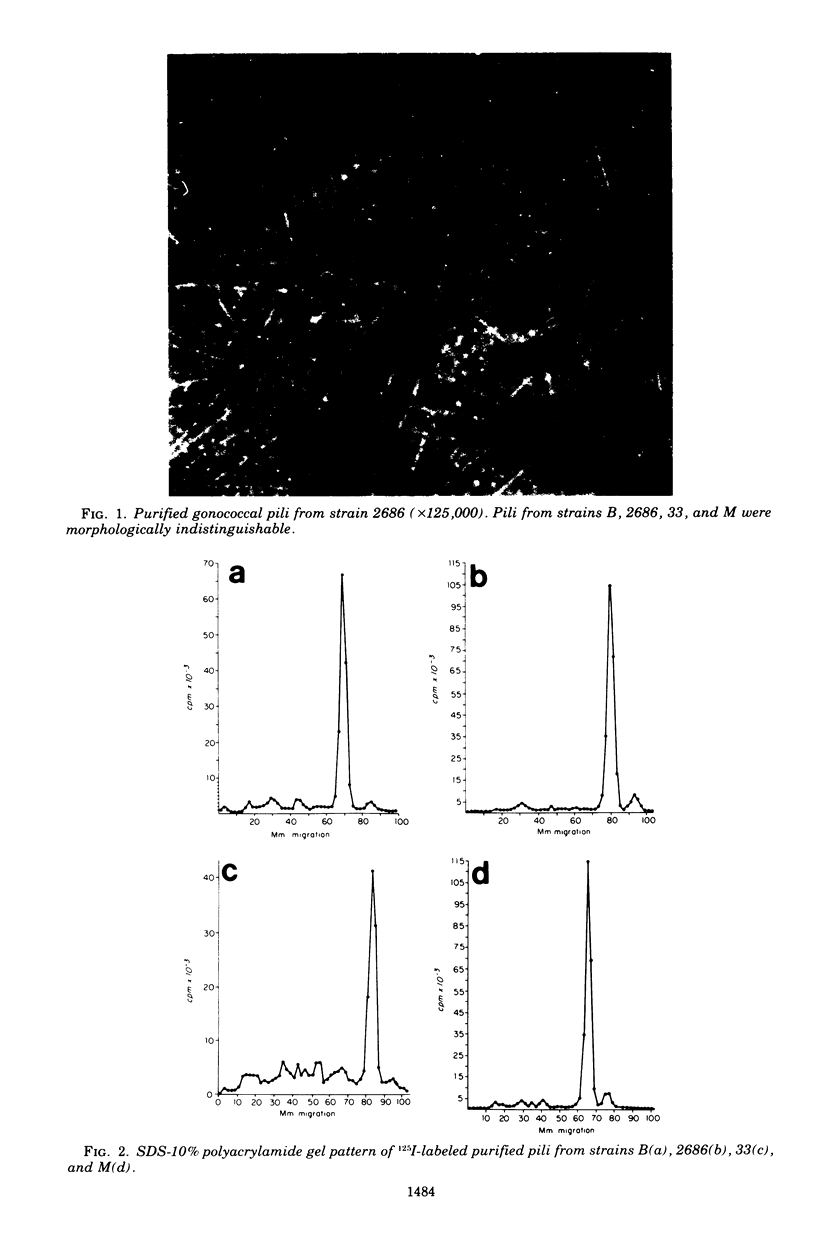
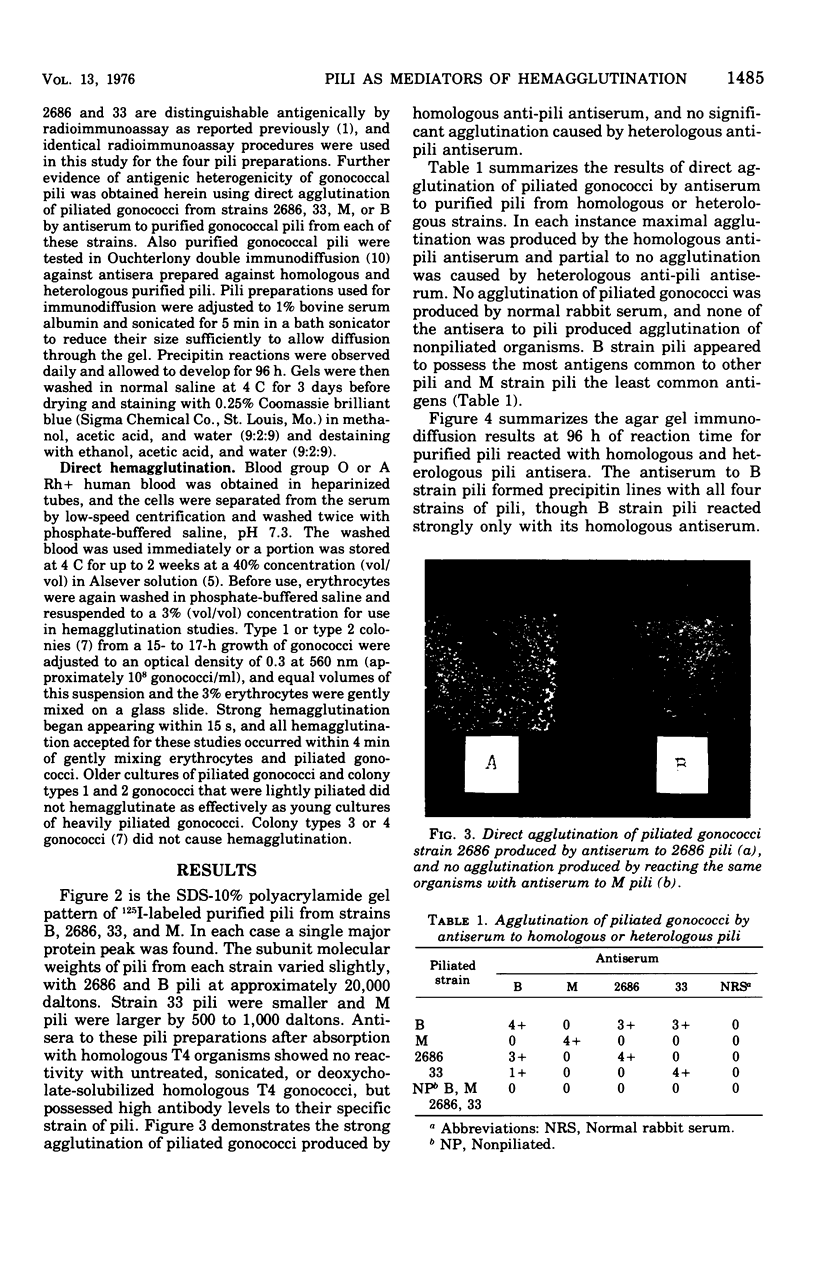
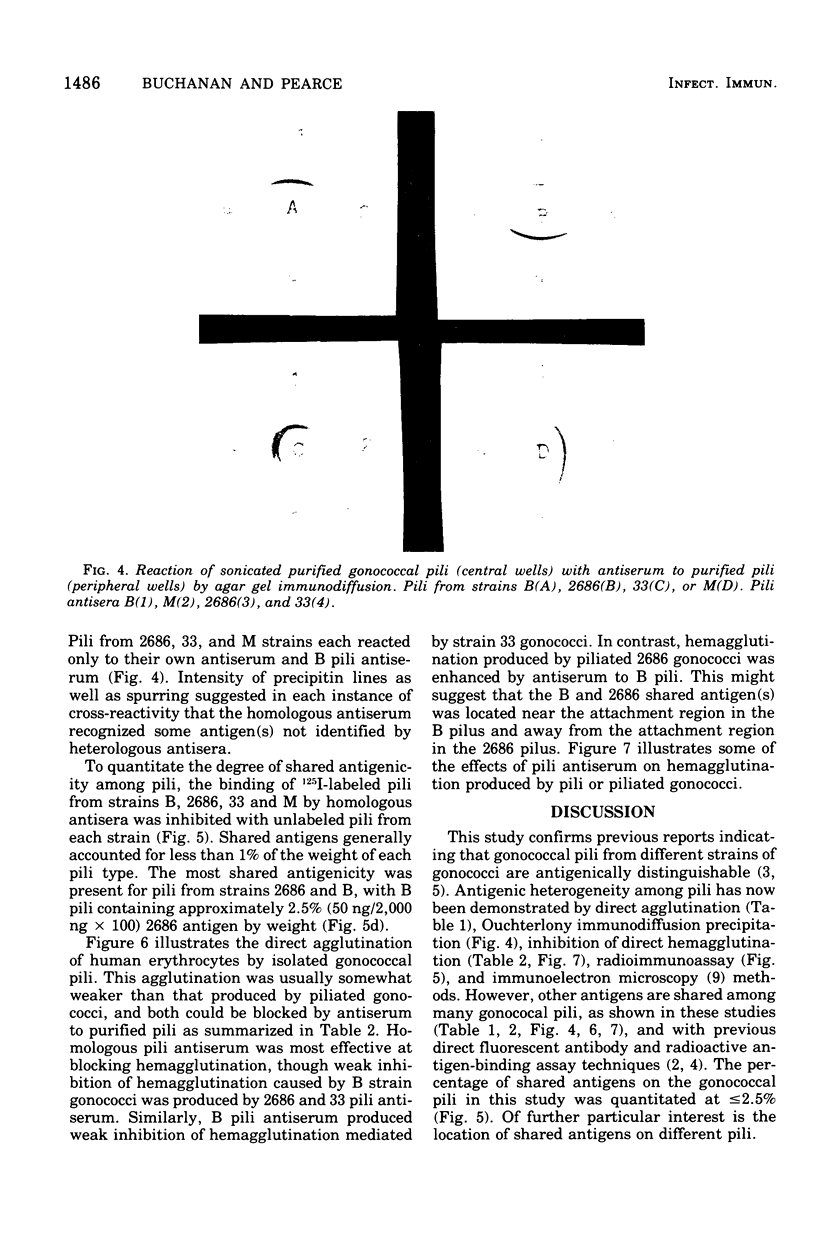
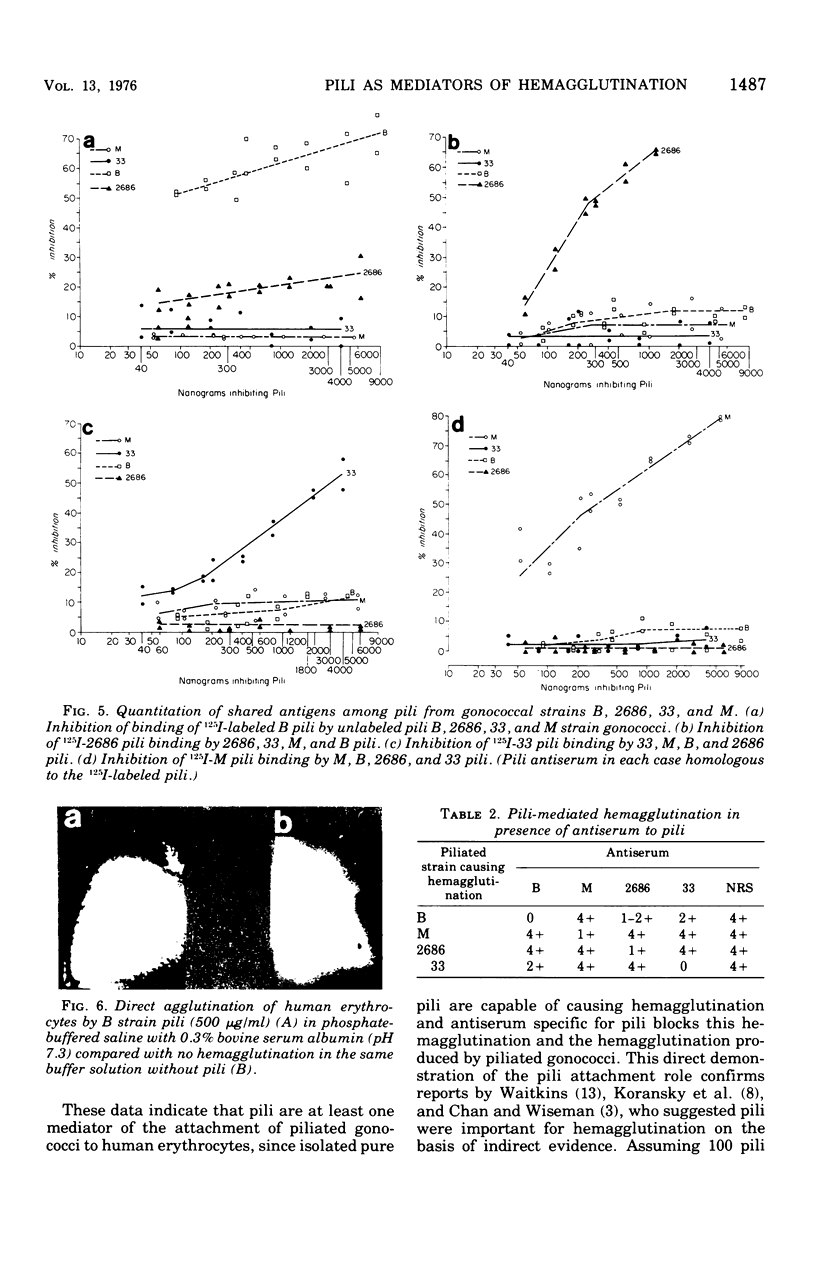
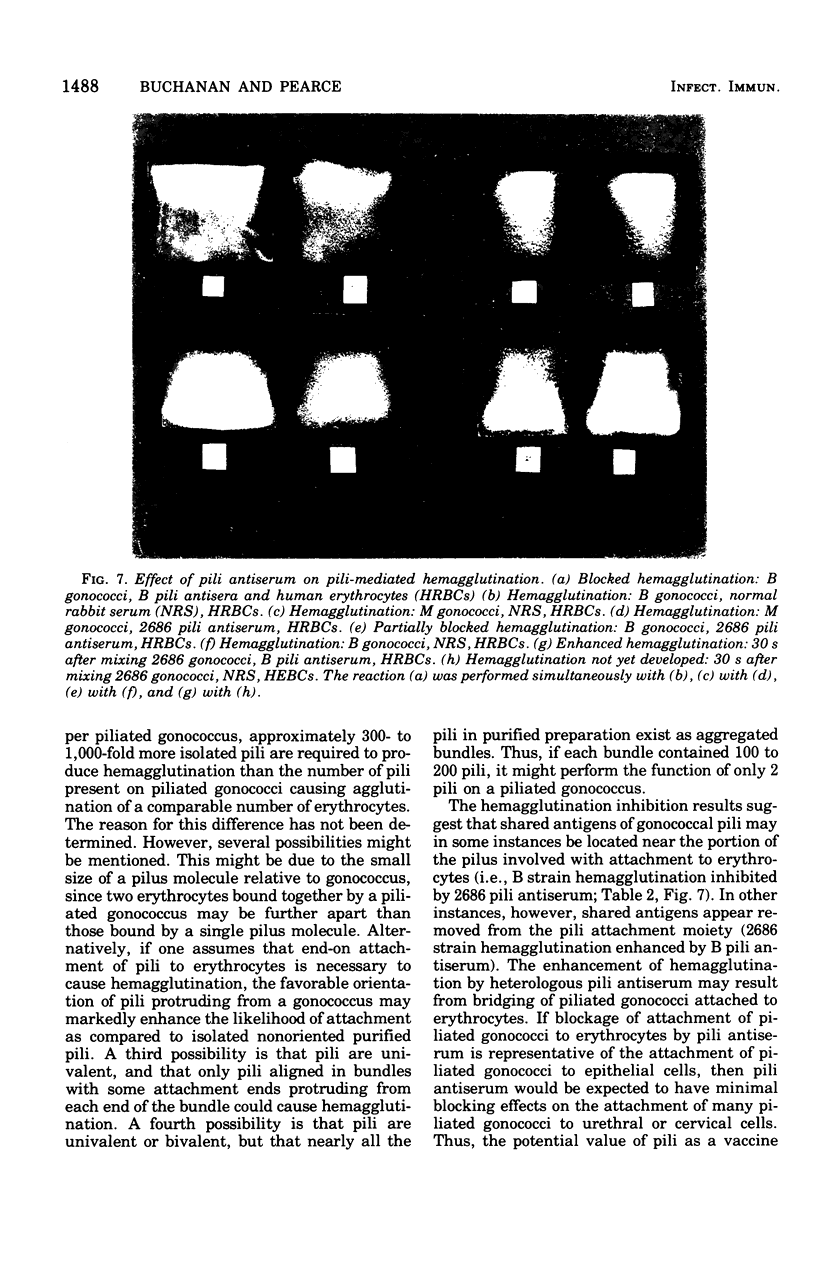
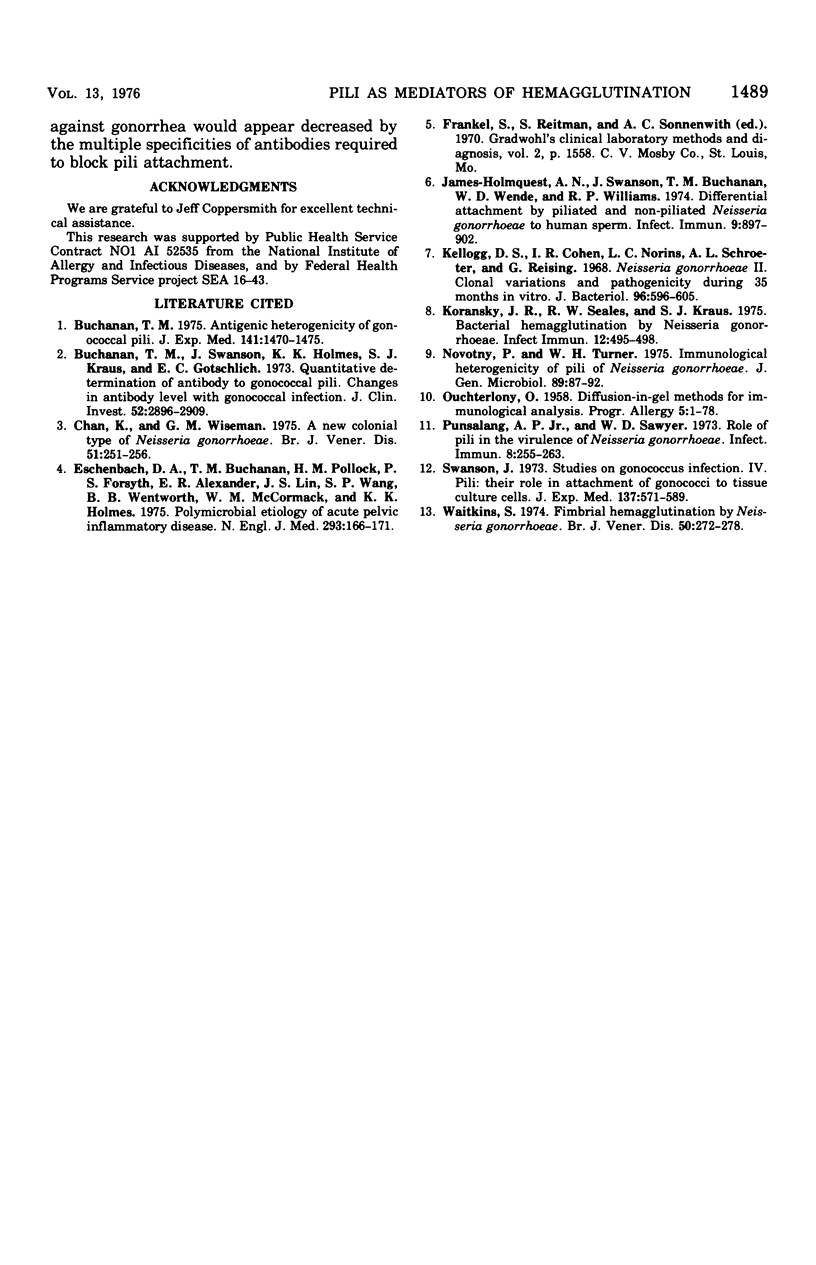
Images in this article
Selected References
These references are in PubMed. This may not be the complete list of references from this article.
- Buchanan T. M. Antigenic heterogeneity of gonococcal pili. J Exp Med. 1975 Jun 1;141(6):1470–1475. doi: 10.1084/jem.141.6.1470. [DOI] [PMC free article] [PubMed] [Google Scholar]
- Buchanan T. M., Swanson J., Holmes K. K., Kraus S. J., Gotschlich E. C. Quantitative determination of antibody to gonococcal pili. Changes in antibody levels with gonococcal infection. J Clin Invest. 1973 Nov;52(11):2896–2909. doi: 10.1172/JCI107486. [DOI] [PMC free article] [PubMed] [Google Scholar]
- Chan K., Wiseman G. M. A new colonial type of N. gonorrhoeae. Br J Vener Dis. 1975 Aug;51(4):251–256. doi: 10.1136/sti.51.4.251. [DOI] [PMC free article] [PubMed] [Google Scholar]
- Eschenbach D. A., Buchanan T. M., Pollock H. M., Forsyth P. S., Alexander E. R., Lin J. S., Wang S. P., Wentworth B. B., MacCormack W. M., Holmes K. K. Polymicrobial etiology of acute pelvic inflammatory disease. N Engl J Med. 1975 Jul 24;293(4):166–171. doi: 10.1056/NEJM197507242930403. [DOI] [PubMed] [Google Scholar]
- James-Holmquest A. N., Swanson J., Buchanan T. M., Wende R. D., Williams R. P. Differential attachment by piliated and nonpiliated Neisseria gonorrhoeae to human sperm. Infect Immun. 1974 May;9(5):897–902. doi: 10.1128/iai.9.5.897-902.1974. [DOI] [PMC free article] [PubMed] [Google Scholar]
- Kellogg D. S., Jr, Cohen I. R., Norins L. C., Schroeter A. L., Reising G. Neisseria gonorrhoeae. II. Colonial variation and pathogenicity during 35 months in vitro. J Bacteriol. 1968 Sep;96(3):596–605. doi: 10.1128/jb.96.3.596-605.1968. [DOI] [PMC free article] [PubMed] [Google Scholar]
- Koransky J. R., Scales R. W., Kraus S. J. Bacterial hemagglutination by Neisseria gonorrhoeae. Infect Immun. 1975 Sep;12(3):495–498. doi: 10.1128/iai.12.3.495-498.1975. [DOI] [PMC free article] [PubMed] [Google Scholar]
- Novotny P., Turner W. H. Immunological heterogeneity of pili of Neisseria gonorrhoeae. J Gen Microbiol. 1975 Jul;89(1):87–92. doi: 10.1099/00221287-89-1-87. [DOI] [PubMed] [Google Scholar]
- OUCHTERLONY O. Diffusion-in-gel methods for immunological analysis. Prog Allergy. 1958;5:1–78. [PubMed] [Google Scholar]
- Punsalang A. P., Jr, Sawyer W. D. Role of pili in the virulence of Neisseria gonorrhoeae. Infect Immun. 1973 Aug;8(2):255–263. doi: 10.1128/iai.8.2.255-263.1973. [DOI] [PMC free article] [PubMed] [Google Scholar]
- Swanson J. Studies on gonococcus infection. IV. Pili: their role in attachment of gonococci to tissue culture cells. J Exp Med. 1973 Mar 1;137(3):571–589. doi: 10.1084/jem.137.3.571. [DOI] [PMC free article] [PubMed] [Google Scholar]
- Waitkins S. A. Fimbrial haemagglutination by Neisseria gonorrhoeae. Br J Vener Dis. 1974 Aug;50(4):272–278. doi: 10.1136/sti.50.4.272. [DOI] [PMC free article] [PubMed] [Google Scholar]







